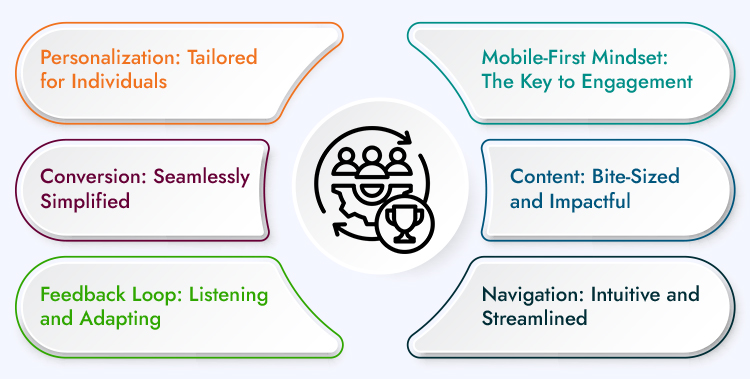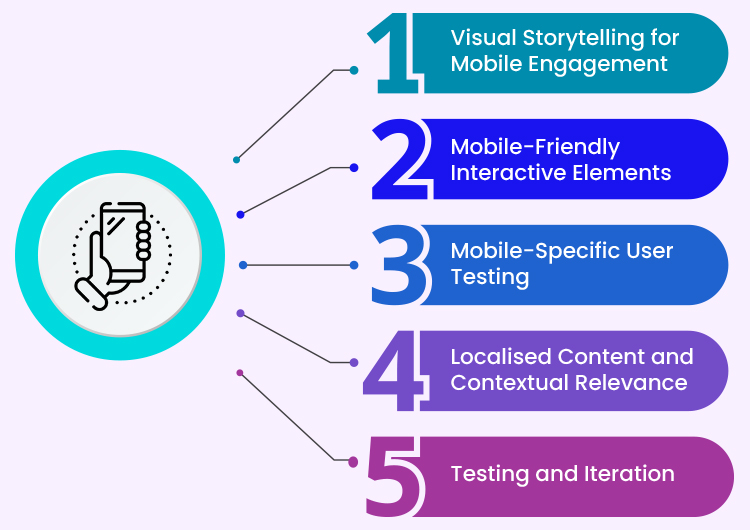Mobile-First Funnels: Capturing and Converting On-the-Go Customers

In today’s rapidly evolving digital landscape, where technology is seamlessly integrated into every aspect of our lives, mobile devices have emerged as the true game-changers. The prevalence of smartphones and tablets has not only transformed the way we communicate and access information, but it has also reshaped the way businesses engage with their customers. As mobile devices continue to dominate the digital landscape, adopting a mobile-first approach has become imperative for businesses to capture and convert on-the-go customers efficiently. In this blog, we will explore the rise of mobile devices, understand the concept of mobile-first funnels, delve into strategies for designing effective mobile funnels, and provide real-world case studies to showcase the impact of such strategies.
The Rise of Mobile Devices
The statistics and trends surrounding mobile device usage paint a clear picture of their significance. With over 5 billion unique mobile users globally, it’s evident that mobile devices have become an integral part of people’s lives. These devices serve as the primary means of communication, information consumption, and even shopping for a large segment of the population. Consumers spend a substantial amount of time on their mobile devices, and this shift in behaviour has caused businesses to adapt their strategies accordingly.
Understanding Mobile-First Funnels
At its core, a sales funnel is a visual representation of the customer journey – from the first interaction with a brand to the final conversion. The concept of mobile-first funnels builds upon this foundation by acknowledging the dominance of mobile devices in consumers’ lives. It emphasises designing the entire customer journey with mobile users in mind, creating a seamless and frictionless experience that guides them from awareness to conversion.
Traditional desktop-centred funnels, while effective in their own right, may fall short when it comes to engaging on-the-go customers. Mobile-first funnels recognize the unique behaviour of users when they’re on mobile devices – quick, multitasking, and often on the move. Therefore, the approach involves tailoring the content, design, and functionality of
The On-the-Go Customer Behaviour: Navigating Mobile-First Strategies for Success

The on-the-go customer behaviour is characterised by rapid decision-making, minimal patience for friction, and a preference for quick, easily digestible content. This behaviour is strongly influenced by the convenience and immediacy that mobile devices offer. People use their smartphones to fill gaps in their schedules, whether waiting for a bus, standing in line, or during short breaks. This necessitates an approach that caters to quick interactions and instant gratification.
Mobile-First Mindset: The Key to Engagement
To effectively capture the attention and loyalty of on-the-go customers, businesses need to adopt a mobile-first mindset across all stages of the customer journey. From the first touchpoint to the final conversion, the design and functionality should be tailored to mobile devices. Responsive web design is no longer an option but a necessity to ensure that content is easily accessible and visually appealing on screens of various sizes.
Additionally, loading times play a crucial role. A slow-loading website can lead to high bounce rates, as users have little patience for delays. Optimising images, leveraging browser caching, and minimising unnecessary scripts can significantly enhance loading speed, contributing to a seamless mobile experience.
Content: Bite-Sized and Impactful
In the realm of on-the-go behaviour, content is king, but its delivery must align with the user’s preferences. The on-the-go customer seeks information that can be consumed quickly without compromising on value. This has led to the rise of micro-content – short-form videos, concise infographics, and bite-sized social media updates.
Businesses must prioritise engaging visuals, attention-grabbing headlines, and succinct messaging. Storytelling becomes a powerful tool, conveying brand narratives effectively in a limited space. Compelling storytelling captures the user’s imagination, fostering a deeper connection with the brand even in the midst of multitasking.
Navigation: Intuitive and Streamlined
Mobile users value simplicity and ease of use. Therefore, navigation within mobile-first funnels should be intuitive and streamlined. Mobile interfaces require larger, easily tappable buttons that cater to touch interactions. The user should be able to move through the funnel stages seamlessly, with a minimal number of steps and distractions.
Additionally, businesses should consider the use of swipe gestures, collapsible menus, and clear progress indicators to enhance navigation. Each interaction should be deliberate and purposeful, guiding the user towards the desired action.
Personalization: Tailored for Individuals
On-the-go customers expect personalised experiences that cater to their preferences and behaviours. Leveraging data analytics and user insights, businesses can tailor content, recommendations, and offers to each individual’s needs. This personalised approach not only captures attention but also nurtures a sense of exclusivity.
Push notifications are a valuable tool for delivering personalised content. Whether notifying users about abandoned carts, limited-time offers, or relevant updates, push notifications serve as a direct line of communication that aligns with the on-the-go behaviour.
Conversion: Seamlessly Simplified
Converting on-the-go customers requires a frictionless process that respects their time constraints. Forms should be concise, asking for only essential information. Auto-fill options and mobile payment methods can expedite the checkout process, ensuring that users don’t abandon their carts due to cumbersome forms.
Moreover, mobile-first funnels should instil a sense of urgency. Limited-time offers or countdown timers can prompt quick decisions, catering to the user’s swift decision-making process.
Feedback Loop: Listening and Adapting
The on-the-go customer behaviour landscape is ever-evolving. To stay ahead of the curve, businesses must establish a feedback loop that involves actively listening to user insights and adapting strategies accordingly. Analytics tools provide valuable data on user interactions, helping businesses understand what works and what needs improvement.
A/B testing becomes a powerful ally in this endeavour. By experimenting with different elements, businesses can refine their mobile-first funnels based on real-world user responses.
The Mobile Mindset:

To design landing pages that resonate with mobile users, it’s essential to delve into their behaviour and preferences. Mobile users are often multitasking, seeking quick information, and making rapid decisions. Their attention spans are shorter, and they’re driven by the need for instant gratification. These behaviours underline the significance of creating landing pages that load swiftly, present information concisely, and facilitate easy navigation.
Visual Storytelling for Mobile Engagement
In the realm of mobile-friendly landing pages, visual storytelling takes on heightened significance. As users quickly scan through content, captivating visuals can convey complex messages swiftly and emotionally. Incorporate images, videos, and graphics that resonate with your audience and align with your brand identity.
Visual Consistency: Maintain a consistent visual style across your landing page. This consistency helps build brand recognition and creates a cohesive user experience.
Brand Story: Leverage visuals to tell your brand’s story. Showcase real-life scenarios where your product or service makes a difference.
Emotional Appeal: Visuals evoke emotions, so choose images that evoke the desired feelings in your audience, whether it’s excitement, trust, or empathy.
Mobile-Friendly Interactive Elements
Interactivity enhances user engagement and provides a memorable experience on mobile-friendly landing pages. Well-designed interactive elements keep users entertained and encourage them to spend more time on the page.
Interactive Quizzes: Create quizzes that offer personalised recommendations based on users’ answers. This engages users and leads them toward relevant products or services.
Scrolling Animations: Use subtle animations that respond to users’ scrolling, adding an element of delight and surprise.
Accordion Menus: Implement collapsible accordion menus to present information in a structured and space-efficient manner.
Mobile-Specific User Testing
Thorough user testing is essential to ensure that your mobile-friendly landing pages perform optimally across various devices and browsers. Involve real users in the testing process to gather feedback on usability, navigation, and overall experience.
Device Diversity: Test your landing pages on a variety of mobile devices with different screen sizes, operating systems, and orientations.
User Feedback: Encourage users to provide feedback on their experience navigating your landing pages. Their insights can highlight areas for improvement.
Localised Content and Contextual Relevance
A significant aspect of mobile behaviour revolves around location-specific searches and tasks. Harnessing the power of geolocation allows businesses to provide users with content that is contextually relevant to their location, enhancing the user experience and increasing the likelihood of conversions.
Local Offers: One of the most compelling ways to grab the attention of on-the-go users is by displaying local offers, discounts, or events that are relevant to their geographic area. This strategy capitalises on users’ immediate surroundings and provides them with personalised value.
Store Locator: For businesses with physical locations, integrating a store locator feature is an excellent way to bridge the gap between the digital and physical realms. By enabling users to easily find nearby stores, you facilitate their journey from online discovery to in-person engagement.
Testing and Iteration
Landing pages should not be static entities. Regularly monitor mobile analytics to gain insights into user behavior, interactions, and conversion rates. This data guides your ongoing optimization efforts.
Heatmaps: Heatmaps visually represent user interactions, highlighting where users click, tap, and scroll the most. This insight helps refine your page layout.
Conversion Funnel Analysis: Analyse the steps users take before converting. Identify any drop-off points and make adjustments to address potential roadblocks.
In Conclusion
Mobile-friendly landing pages are the gateway to successful customer engagement and conversions in the mobile-first era. By understanding on-the-go behaviour, prioritising simplicity, embracing responsive design, and optimising load speed, businesses can create landing pages that capture attention, guide users effortlessly, and drive meaningful actions.
As mobile usage continues to shape user expectations, mastering the art of mobile-friendly landing page design becomes a strategic advantage that can elevate your brand’s digital presence and deliver exceptional results.












